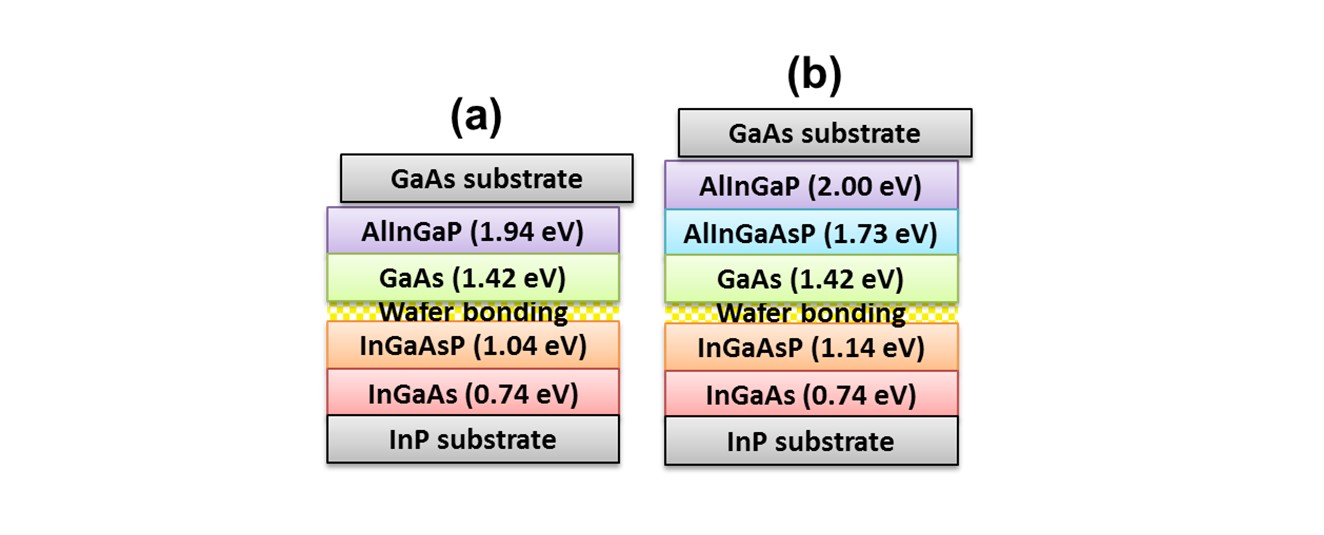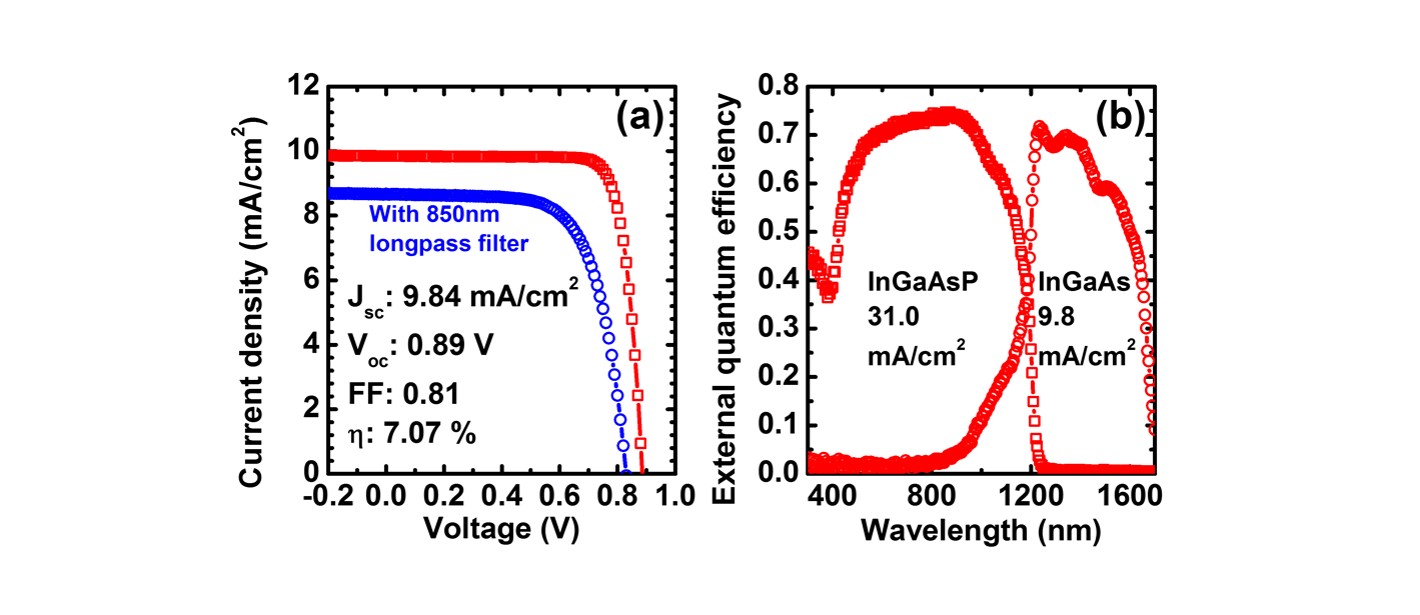■ Example of research topics ■
[ Solar ]
1. 4 junction by wafer bonding /
2. High-speed MOVPE /
3. EL and PL characterization /
4. Thin-film multi-junction (design and light trapping) /
5. 1.15 eV middle cell with MQWs /
6. Theoretical modeling of MQWs (quasi bulk approach and cell design) /
7. WoW /
8. ELO /
9. Dilute nitride MQW
[ Growth ]
1. III-V on Si photo detector /
2. III-V on Si solar cell
[ LED ]
1. Chip-white LED
[ Solar Fuel ]
1. CPV + water electrolysis /
2. CO2 reduction /
3. Semiconductor/electrolyte interface /
4. Polarization-controlled nitride photocathode /
5. Design of energy management system using hydrogen-based power storage
[ Quantum Modeling ]
1. Quantum modeling of insulators
Four-junction solar cells by wafer bonding
H. Sodabanlu, K. Watanabe, M. Sugiyama, Y. Nakano
During the last few decades, III-V multi-junction (MJ) solar cells have attracted much research interest owing to their advantages, including minimization of fundamental losses by employing several materials with their energy bandgap corresponding to different wavelength ranges. Considering the limitations of lattice and current matching, it seems difficult to increase the number of subcells and absorb the entire solar spectrum by employing only one III-V material system with similar lattice constants. Recently, this material restriction has been overcome by the direct wafer bonding technique; subcells can be separately grown on different substrates and later bonded together as illustrated in Fig. 1. To date, a 46% conversion efficiency of an InGaP/GaAs/InGaAsP/InGaAs four-junction (4J) structure fabricated by this technique has been reported.[1]
Our research group has been investigating the metalorganic vapor phase epitaxy (MOVPE) growths of III-V semiconductors on GaAs and InP substrates for the fabrication of MJ solar cells using wafer bonding method. Recently, we reported the results of InGaAsP/InGaAs dual-junction (2J) solar cells on InP substrates (Fig. 2).[2] This achievement was owing to optimizing of growth temperature appropriated for each III-V material. Following this success, currently, the fabrication and development of InGa(Al)P and GaAs subcells on GaAs substrates have been being investigated, in parallel with the study and optimization of direct wafer bonding between GaAs and InP substrates.
[1] F. Dimroth et al., IEEE J. Photovoltaics 6, 343 (2016).
[2] H. Sodabanlu et al., JJAP (impress)

Fig. 1 Structures of (a) 4J and (b) 5J solar cells fabricated using wafer bonding.

Fig. 2 (a) Current-voltage characteristics and (b) external quantum efficiency spectra of an InGaAsP/InGaAs 2J cell on InP.